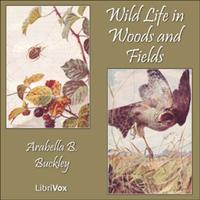THE MOUSE AND THE SHREW
PETER has a fine old cat. She is very clever. She rattles the handle of the front door when she wants to come in. If she comes home very late at night she jumps on the wire which runs along the garden wall. This rings a bell, and Peter comes down and lets her in.
But in one thing she is very stupid. She cannot learn that a shrew and a mouse are not the same kind of animal. We are glad when she catches the mice in the garden and in the field. For the mice eat our peas and the bulbs of our crocuses. They hide in the corn-ricks and eat the wheat and oats.
But shrews eat insects and worms and slugs, and this is good for us, because insects and slugs eat our plants.
It is so silly of Pussy, for she ought to know. When she has killed them, she does know them apart, for she eats a mouse and likes it, but she will not eat the shrew. She only kills it and leaves it lying on the path. We think she kills if because it runs away; and does not eat it because it has a bad smell.
A great many people do not know a mouse from a shrew, for they are very much alike. A shrew is not quite so large as a field-mouse, and a little larger than the dear little harvest mouse, which makes a round nest of dry grass among the corn-stalks.
We found one of these nests last summer. It was about as big as a large swan's egg, and the same shape. We peeped inside and found seven wee little harvest-mice, with red-brown fur on their backs and white fur underneath.
The shrew is more of a grey colour. But there is one way by which you can always tell a mouse from a shrew. The mouse has a short snout, and four broad white teeth in front. It uses these for gnawing roots and bulbs, and biting the ears of corn.
But the shrew has a long, thin snout, and its crown teeth are very small and pointed, so that it can kill and eat insects, worms, and snails.
Shrews and mice are both very busy in the evening. We go out sometimes to watch them when the moon is shining. The mice run along so fast out into the field and back to the hedge. Paul says they are carrying seeds and bits of roots into their hole in the bank. For they know that they will want food when they wake up in the winter, and there is none to be found. The shrews move more quietly under the hedge. They push their long snouts into the thick grass, and eat the earwigs and caterpillars.
Both the mice and the shrews are very much afraid of the Barn Owl, which comes out at night and carries them away in her sharp claws to feed her young owls.
Shrews do not store up food, for they sleep in a hole in the bank all the winter through. Then in the spring they line the hole with soft dry grass, and there the mother brings up five or six little shrews.
The mouse, too, burrows deep into the bank. She lays up a nice store of food and goes to sleep. But she often wakes and has a feed, and goes to sleep again. She brings up a great many families in a year. That is why there are so many mice.

